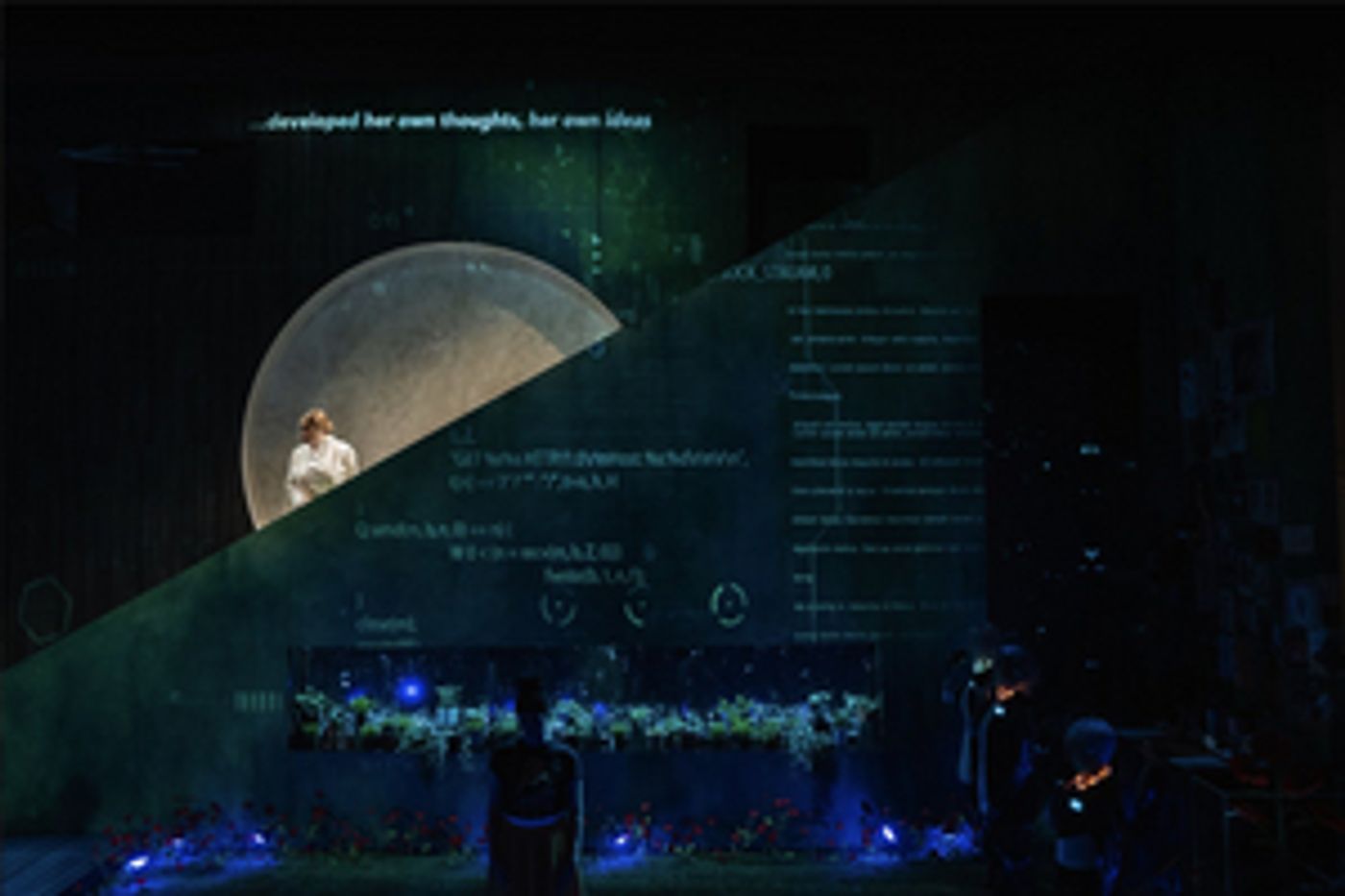Review: R.U.R.: A TORRENT OF LIGHT at OCAD University
Tapestry's new production effectively marries technology and opera.

"Are we Ready to Play God?" That's the question that pervades R.U.R.: A TORRENT OF LIGHT, Tapestry Opera's new co-production with OCAD University. Inspired by Czech playwright Karel Čapek's 1920 work R.U.R. (ROSSUM'S UNIVERSAL ROBOTS), which introduced the world to the word "robot," the opera updates the source material while preserving its central questions about servitude and liberation. It explores the watershed moment when an android achieves free will. With an ability to choose their futures for themselves, will robots continue to assist humanity - or simply replace it?
Borrowing the phrase "a torrent of light" from FRANKENSTEIN, another story about creating new life in our image with unintended consequences, Nicolas Billon's libretto follows the story of programmer Helena (a fiery Krisztina Szabó) and her husband Dom (brooding Peter Barrett) as they introduce a new operating system, KAIROS, at the 2042 AI World Summit. "A torrent of light" categorizes science as a potential force for good, a counterpoint to the Dark Ages of regression, and Helena is a proponent of this vision of discovery for discovery's sake. Dom, on the other hand, sees the business side of scientific advancement, having just taken over a large robot hardware company to assure their firm's wealth and power.
As they perch on the cusp of market domination, one moment is all it takes to upset the Apple (TM) cart of the balance of power between human and robot: lead household android Alex (Scott Belluz) decides to say "not right now" when asked to perform a simple task. The potential implications of Alex's newfound freedom lead to a terrible rift between Helena and Dom, as the former eagerly hopes her CPU-based children will leave the nest, and the latter will do anything to clip their wings.
One of the joys of R.U.R. is its visual language, which via director Michael Hidetoshi Mori goes all-in on a retrofuturistic, constructivist sci-fi aesthetic, full of bold geometric shapes. An imposing, tall house fills the space of OCAD's Great Hall (set design by Cameron Anderson), bisected at a diagonal by a staircase in front of a sun-like, circular area designed for projections. A cavernous side doorway disgorges a robot chorus, whose gray and white colour-blocked jumpsuits (costumes by Joanna Yu) and glowing collars and belts recall early TV serials of moon men. This is all contrasted with the bright simplicity of a foregrounded flower garden, itself in internal contrast as its expansive blossoms bloom in artificial turf.
The wearable technology in the costumes, from OCAD's Social Body Lab, links the performers through lights and animations, and 3D-mapped projections (designed by Cameron Davis) hint at an inner life to objects. Before the show, performers traverse the audience to show us how even costuming can interact with the music; one drags a bow across a sleeve to generate sound. There's a certain unrestrained glee in how eagerly the production throws itself into its technological aspects, even in the midst of warning about a potential robot revolution.
After a slow start, Nicole Lizée's score gets more interesting and nuanced as the opera progresses. The orchestra and chorus play over 100 different instruments, including air canisters and boomwhackers. The electronic elements bring in musical references and sounds reminiscent of everything from a theremin to an 8-bit video game to a CASIO keyboard sampler having an emotional breakdown. Helena categorizes music as data input and data as music, and the lines between human and electronic sound are similarly blurred; a human howl of anguish, for instance, fades into a susurrus of mechanical distortion.
The juxtapostion of piercing, simple melodic lines for the leads and more complex, distorted rhythms for the robot chorus is effective. Belluz's soaringly high refrains suggest Alex's Data-like innocence and optimism. Barrett sings with the world-weary, imperious boom of someone who is used to getting his way. Szabó as Helena translates her passion for her charges, and her link between their oppression and her own, into a magnetic performance.
The robot ensemble is used particularly well, weaving a synthetic-fibre blanket of sound behind Szabó. Their uncanny-valley, almost-human movements (choreographed by Jaime Martino) may be exactly what we expect, but the visual is so stylishly enacted that it's a delight to watch and a pleasure to suspend your disbelief. Things are given a serious added jolt of musical electricity with the entrance of another AI played by Danielle Buonaiuto, whose plaintive inability to understand the situation is heartbreaking.
With so much going on, something has to give, and it's in the story. The emotions in the show are very powerful, but the debate is by necessity somewhat simplified to make room for song. At the same time, the overall message gets a little lost in the chaos of the ending, partially because the robots themselves are largely ciphers after Alex's early solo, making it harder for us to understand their reactions later on.
Overall, though, this is a visually and aurally compelling production that successfully marries opera and automation, and encourages us to look into the eyes of our creations to try to find the best in ourselves.
How to Get Tickets:
Tapestry Opera's RUR: A TORRENT OF LIGHT is playing at OCAD University's Great Hall (100 McCaul St.) until June 5, 2022.
Tickets are currently sold out, but you can join the waitlist by clicking on the "Buy Tickets" link below.
Photo Credit: Elana Emer
Reader Reviews
Videos

